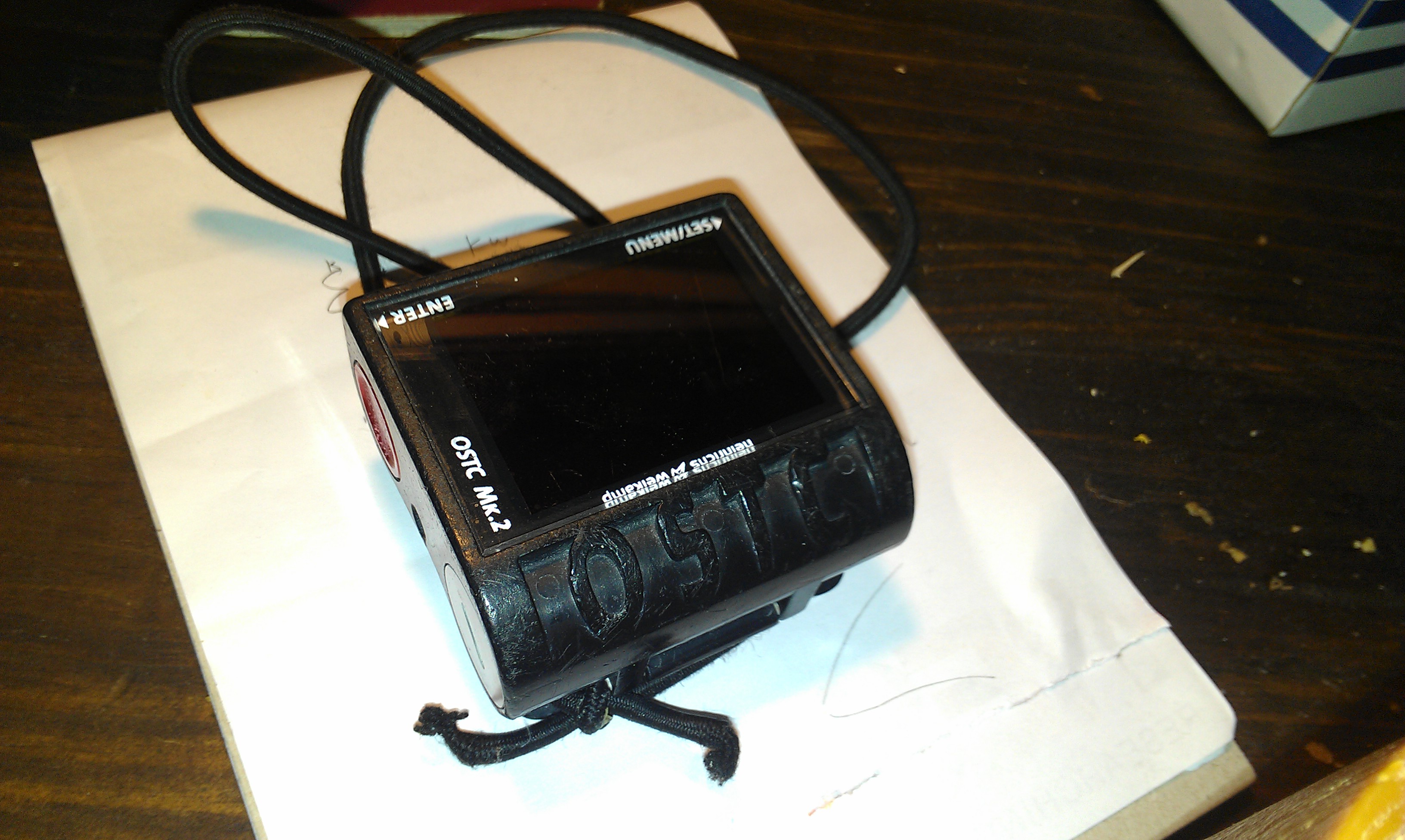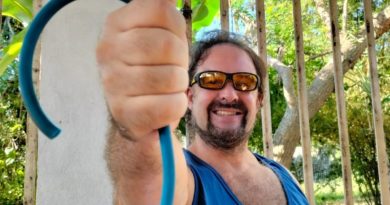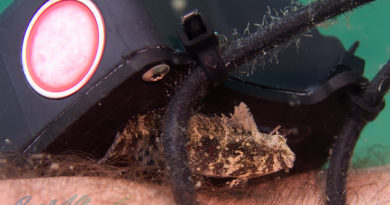Scuba Gear I Knew and Loved (SGIKAL): OSTC
I’m not as sad as if a real friend had died. Not even as sad as if my dog had died. But about as sad as if my hamster had died. What happened? My dive computer broke. How can I be so attached to a mere piece of electronics? On several occasions, I have trusted my life onto the electronic circuits of this dive computer, and it did a good job. It’s the Open Source Tauchcomputer (German for open source dive computer), made by Heinrichs Weikamp, a German company. As the name says, the software running in this device is open source, which means that the program code is available. It would be a dangerous to modify this software without great care and expertise, but it’s still nice to know what’s running on the small box on my wrist, and I’ve certainly read the code.

What did this computer do for me? Besides the basic functions of displaying dive depth, time and water temperature, it lets me chose the exact decompression algorithm, one of several variants of the algorithms developed by Bühlmann. What is decompression? When you dive gases dissolve in your body, and only a slow and step-wise ascent will let them come out of solution without forming harmful bubbles. And you better have a computer to calculate the depths and durations of these stops for you. Both open circuit as well as rebreather decompression algorithms are available, and I can also set parameters of the algorithms such as the gradient factor. The OSTC supports mixed gas diving (using Helium in the breathing mix), and shows saturation histograms for both the N2 and He in my body, which is helpful in building intuition about the decompression process.
The contact buttons worked well under all conditions, and the menus are intuitive. The back-lit display is easily visible at night or at depth – and the real depth is where I have taken my OSTC many times; I had it with me during almost all my tech dives, including my unforgettable (yep, with trimix you are not narked, so you won’t forget what you saw) 100 m dive described in my book Sex, Drugs and Scuba Diving. Before these tech dives, we made a decompression plan with the V-planner software on land, and followed this plan, as written down on our slates; The OSTC’s deco algorithm served as a back-up, but the deco obligations it displayed typically were within a few minutes of the pre-planned deco schedule.
The OSTC was a birthday present from my dad in 2009, and it lasted several 100 dives before a big part of the pixels in the display died. It was underwater with me in Okinawa, the Philippines, Indonesia and Australia. It has seen the world with me! Fortunately the makers gave me a good deal on a replacement model. As I write this I am just coming off a bad cold and despite the lovely ocean conditions in Sydney today I won’t dive – I can’t wait to be back underwater soon!


